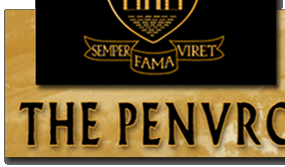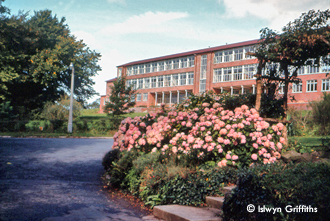 |
By the early years of the 1950s, it was clear that the school in Pembroke Dock was neither big enough nor equipped for modern education. The new school opened to pupils in 1955. |
A History of Pembroke Grammar School
By Author & Broadcaster, Phil Carradice |
Formal education in the town of Pembroke Dock did not arrive until the years after 1870, when Forster’s Education Act created School Boards whose purpose was to establish a system of elementary education across the country. Before this, such education as was available in towns like Pembroke and Pembroke Dock came either in the shape of voluntary establishments or through the National and British Schools of the Non-conformist and Anglican religions.
By the beginning of the twentieth century, grants from the government’s Science and Art Department meant that Albion Square Board School in the western part of the town was offering industrial, scientific and technological education that – with the lure of a dockyard or Admiralty apprenticeship - would keep pupils beyond the normal school leaving age of fourteen. However, for many of those in government (national and local) there was a feeling that the School Board in Pembroke Dock - like many others across the country - had exceeded its powers, by offering working class people an education that was beyond their position and station in life.
The Pembroke and Pembroke Dock School Board was abolished in 1902, thirteen years after the Welsh Intermediate Education Act had been passed. As was intended, a newly created Joint Education Committee planned and established a number of Intermediate Schools across the county, their purpose being to create a system that was exclusive and essentially middle class, but offering a syllabus that was a combination of the Classics and practical subjects such as woodwork and metalwork. Fees were to be charged – between £3 and £8 each year – unless pupils were lucky enough to win a scholarship. The Dockyard Class remained at Albion Square and this, combined with the charging of a fee to attend the new school, meant that those youngsters who came to “the County” school were not going to be the mechanics of the future but boys and girls who had ambitions of careers in the professions. The foundations of the future Pembroke Grammar School had been laid. |
|
Pembroke Dock County Intermediate School was built on the corner of Bush Street and Argyle Street between 1897 and 1899. While the school was being built, pupils were housed in temporary accommodation, but once the new buildings were handed over there were five classrooms, a spacious assembly hall - which also doubled as a gymnasium, what was euphemistically called a “Chemical theatre,” a laundry and kitchen for the girls, and a woodwork shop for the boys. There was also a large staff room.
Getting pupils was no problem; keeping them was another matter. Ideally pupils would stay at school for a four-year course of study that would, eventually, lead to them gaining their School Certificate. Even in a relatively prosperous community like Pembroke and Pembroke Dock - where, thanks to the presence of the Dockyard, employment was plentiful - there was still a likelihood of boys and girls being pulled out of education once they reached the statutory leaving age of fourteen, in order to earn money. Uniforms and books were expensive, quite apart from the annual fee
Thomas R. Dawes was an early headmaster but by 1906 T.H. Jones was in charge. A former Master at Cardiff Boys School, he remained in post for over thirty years. When Jones took over, there were 172 pupils enrolled at the school, the number rising steadily until it reached just short of 350 in the years immediately after the 1914-18 war. With the Dockyard still operating, it was a boom time for the school and temporary huts had to be provided to cater for the extra numbers. These were duly made more permanent in the 1930s.
Pembroke Dock County School, like many of the new Intermediate Schools, modelled itself on the great Public Schools of Britain. As a consequence, there was a prefectorial system from the very early days, as well as a school uniform and a house system that was intended to promote esprit de corps, loyalty and a competitive spirit on the games field.
T.H. Jones also introduced a school eisteddfod that added another element to acceptable competition, this time in the arts. A School Prize Day was also established; prizes and certificates were presented and guest speakers pulled in to offer words of advice and comfort to pupils and visitors alike.
During the economic hardships of the 1930s, the school, like others of its type, did not have an easy time. The feeling that the only education worth having was one you paid for continued to persist and a means test was introduced into the education system to reduce the availability of free education at this advanced level.
At the same time, fee charges increased significantly. The Second World War and repeated bombing of the town did not help matters - although little damage seems to have been inflicted on the fabric of the school.
|
Click to continue
Phil Carradice PGS History |

|
|
| |
The first home of the Intermediate County School in
the former Victoria Hotel at the top of Pembroke St.
|
|
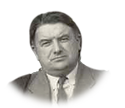
|
|
Roland Mathias
1948-1958
|
T.C. Roberts
1958-1968 |
Two Unique Headmasters
Over Two Decades |
Roland Glyn Mathias: Poet, editor, critic and schoolmaster: born Talybont-on-Usk, Breconshire 4 Sept 1915; Headmaster, Pembroke Dock Grammar School 1948-58; Headmaster, Herbert Strutt School 1958-64; editor, Dock Leaves (later The Anglo-Welsh Review) 1961-76; Headmaster, King Edward VI Five Ways School 1964-69; married 1944 Molly Hawes (died 1996; one son, two daughters); died Brecon, Powys 16 Aug 2007. |
T.C. Roberts: In September 1958 Mr Roberts became Headmaster in succession to R.G. Mathias and his well-established reputation as a doughty warrior on the education battlefield in Pembrokeshire came ahead. |
Click to read the full
Mathias Obituary |
Click to read the full
Roberts Article
|
|

|
__________________________
|
|
The Great War & WWII Rolls of Honour
by Roger MacCallum
|
After the Great War, the school - in those days called Pembroke Dock County School - commissioned a roll of honour, carved in oak, to commemorate those former pupils who had served their country during the conflict. There are 185 names on this plaque, including 20 who lost their lives. There is also a plaque for WWII. |
|
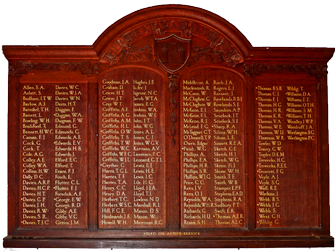
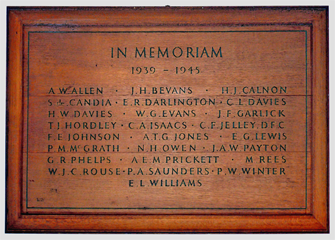
|
Click to continue Great War and WWII Rolls of Honour and view a large versions of the boards |

|
|
|
Annual Prize Day - Headmaster's Reports
A Review by John Trice |
I am John Trice, past pupil from 1950-59, and Head Prefect from 1958-59. I have been asked to introduce these School Reports, given by our distinguished Headmaster, Roland Mathias, from 1953 to 1957.
|
Click to continue John Trice's Review
of Headmaster's Reports |

|
|
A Short History of the Pembroke Conferences |
|
Enthusiastic students interested in international affairs arrive from over a dozen countries. Most were from universities and other establishments of higher education. Ages ranged between 18 & 25. |
Stephen Griffith, the Physics master at the Pembroke Dock Grammar School, called a meeting in the town in March 1954 in which a society was formed whose object was to foster international goodwill and understanding. During the discussion it was suggested, amongst other matters, that a contribution to this could be made through promoting international student exchange.
Ivan Rudolf, a headmaster from Maribor in Yugoslavia, was at the school at the time and the society invited him to send a few of the senior boys at his school to spend a camping holiday with some of our boys at Freshwater East at the end of the summer term. Four boys eventually turned up, namely the twins Mirko and Marko Napast, Danilo Gustincic and Aleksej Calnik. The boys from our school who were to set up camp with them were Eric Morgan, Derek Blake, David Horn, Michael Owen, Terence Panton and Stephen Brown. Roland Mathias, the headmaster, gave us the loan of £20 and his full support. Other monies came from a few dances which we held at the school.
The fortnight was one of exploring the coastline mostly on bikes, a wet trip from Martin’s Haven to Skomer Island in Reuben Cod’s small boat, a trip up the Cleddau, a dance at the school and a grand farewell camp fire around which about a hundred or more people (including a double-decker bus-load of our pupils, school staff and parents) sang heartily to the accompaniment of a harpist and ate a mountain of sandwiches. This experiment was successful because of the tolerance and sportsmanship of the six campers from the school, the help Fred Morgan and the local scouts group gave us, and the wholehearted support of all the school in the dances and film shows which helped finance the camp.
|
Click to continue Pembroke Conference History |

|
|
|
The First Home of the County School (pictured left): The Welsh Intermediate Education Act of 1889 led to the establishment of the first Intermediate County School in Pembroke Dock. It opened in the former Victoria Hotel at the top of Pembroke St. in January 1895. CLICK HERE for Lewis Tucker’s evocative article in the 1949 Penvro: "Inter School Memories 1895 to 1900" in which Thomas R. Dawes, the erudite first headmaster, features.
Mr. Dawes also had a myriad of interests out of school. He wrote about one of the most remarkable features in the history of Pembrokeshire-- the settlement of a numerous colony of Flemings among its native population. "The Flemings in Pembrokeshire", was a lecture delivered in Pembroke Dock by T. R. Dawes. It was later reprinted by the Western Mail in 1902 and sold for sixpence! CLICK HERE to read.
(Adobe Acrobat Reader Required-download information Click Here)
|
|
|







